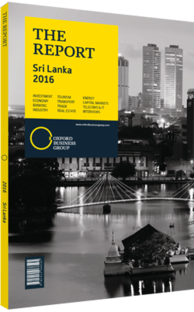Manufacturing
The Company
Textured Jersey Lanka (TJL) commenced commercial operations in Sri Lanka in 2001 with Textured Jersey UK and Brandix as joint venture partners. A public limited liability company, renowned for the production of quality, weft-knit fabric, TJL was quoted in the Colombo Stock Exchange (CSE) in 2011 subsequent to a change in ownership in 2004, when Textured Jersey UK was replaced by Pacific Textiles, a Hong Kong-based company with one of the largest manufacturing facilities in China. Having mastered the art of fabric making, Pacific Textiles provides TJL with extensive support in research and development as well as manufacturing expertise. Brandix Lanka is the largest apparel exporter in Sri Lanka. It services global brands and is TJL’s partner, providing a strategic link in the supply chain.
In 2006 TJL saw a 100% expansion in capacity, followed by a second phase of expansion, completed in 2008, and a third 10-12% expansion in 2014. In 2013 TJL entered into a technical service and management agreement with India-based knit-fabric manufacturer Ocean India, enhancing TJL’s regional experiences and contributing towards its knowledge of regional business operations.
Despite recording marginal top-line growth, with a compound annual growth rate (CAGR) of 8% over FYs 2012-15, gross profit grew considerably, with a CAGR of 8%, over the same period. As a result of cost management initiatives undertaken by the company, both direct and indirect costs declined over the period, leading to a growth in earnings before interest and tax (EBIT) at a CAGR of 16% over a period of three years to FY 2015. TJL recorded a marginal 3% year-on-year increase in top-line revenue growth in the first quarter of FY 2016, with LKR2.8bn ($20.2m) in gross revenues, compared to LKR2.7bn ($19.4m) the previous year. The effect of factory modernisation and the use of a multi-fuel boiler, coupled with effective cost management, led to gross profit margins of 12% in the first quarter of FY 2016 compared to 8% in the same period the previous year, while EBIT grew by an impressive 45% year-on-year. A prevailing low interest rate regime led to a 51% drop in net finance income in the first quarter of FY 2016. Earnings in the first quarter of FY 2016 stood at LKR206m ($1.5m), representing year-on-year growth of 26%
Development Strategy
In FY 2016 TJL’s acquisition of Ocean India added 16m metres of knitting capacity, while the addition of Quenby Lanka Prints, Sri Lanka’s leading fabric printer, broadens the service solutions offered by TJL to their buyers. The company remains the undisputed leader in weft-knit fabric manufacturing, with a total capacity of over 47m metres. Acquisition-driven inorganic growth strategies implemented by TJL in FY 2016, coupled with organic growth strategies, strengthen the company in terms of volume, capacity and synergies, and is expected to convert to earnings over the next two years.
Forecast
TJL’s investment in a multi-fuel boiler was down to a cost saving initiative, implemented because energy costs account for 11% of company sales. The multi-fuel boiler is expected to reach the expected levels of efficiency during FY 2016, impacting positively on gross margins. With the modernisation of the existing TJL plant, coverall capacity is likely to increase, while the efficiency of the firm’s machinery is also expected to increase, reducing costs via lower consumption of dyes, chemicals and water, as well as process times.
TJL continued to maintain a strong balance sheet in the first quarter of FY 2016, with LKR3.4bn ($24.5m) in cash and zero long-term debt, while LKR1.4bn ($10.1m) of short-term debt was added in order to best manage and optimise the effects of the company’s cash flows and investments.
You have reached the limit of premium articles you can view for free.
Choose from the options below to purchase print or digital editions of our Reports. You can also purchase a website subscription giving you unlimited access to all of our Reports online for 12 months.
If you have already purchased this Report or have a website subscription, please login to continue.

